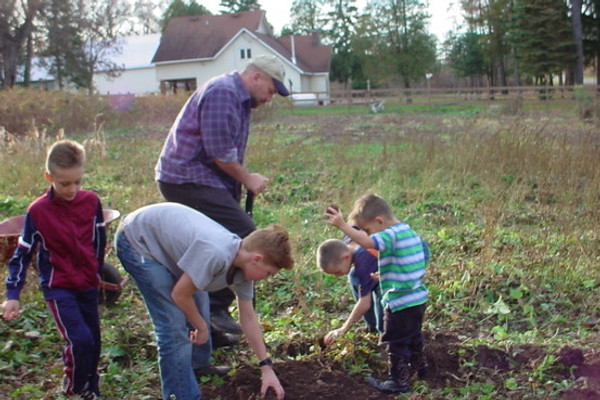My four hens have barely slowed down for the winter. I’m still getting three and sometimes four eggs a day, faster than I can give them away, since I try to limit myself to eating four eggs a week.
I have one Golden Comet hen and three Barred Rock hens. I can recognize my Golden Comet hen’s eggs because they’re darker brown. She has not missed a day since she first started laying in August. She’s also the sweetest and most sociable of the chickens.
I am not giving my hens any artificial light or artificial heat. I’ve bought the apparatus to do it if they seem stressed by the cold, but so far they seem fine. These chickens are said to be hardy enough for New England winters. Their little house is snug and filled with hay. I also put hay on the ground underneath the chicken house to help keep their little feet off the cold ground. The chickens do seem to be eating more in cold weather. They always have laying mash available, and I take them some kind of treats every day — vegetable scraps from the kitchen, leftover gravy mixed with cracked wheat, and sometimes sprouted legumes. Nothing goes to waste in the kitchen. Every day I also give them alfalfa pellets that I got at the seed and feed store. The pellets contain nothing but ground, compressed alfalfa and cost $16 for 50 pounds. That was the best winter source of chlorophyll that I was able to come up with. I keep ground oyster shells on hand. I also have a big bag of flax seed. I try to vary their diet as much as possible, not only for their health, but for their entertainment. Treat time is the high spot of their day.
One thing I’ve noticed about my chickens. When they were maturing and approaching laying age, they spatted fairly often. Now I never see one chicken being mean to another chicken. I assume this means that they’ve worked out the pecking order, and now they just enjoy each other’s company. If I take them particularly exciting treats (they love leftover pasta — they probably think it’s worms) one chicken may grab the treat and run, but they don’t spat.

